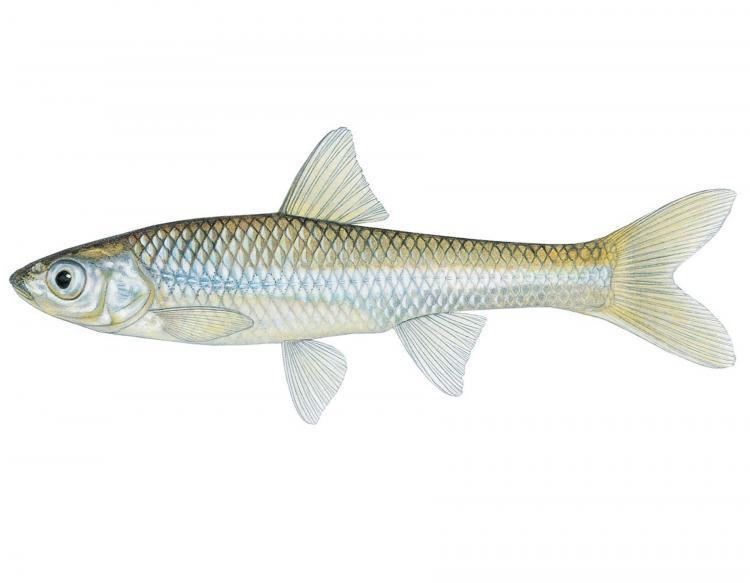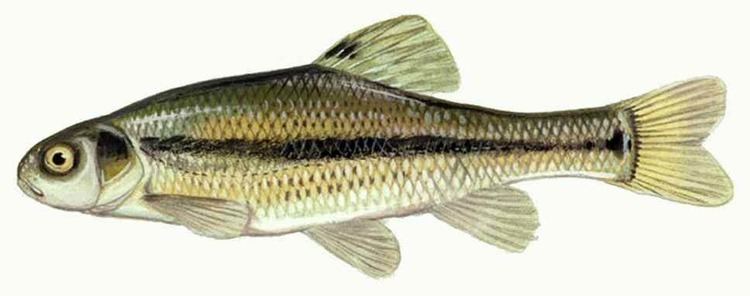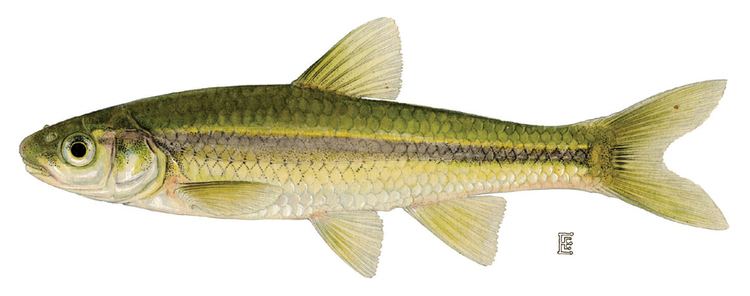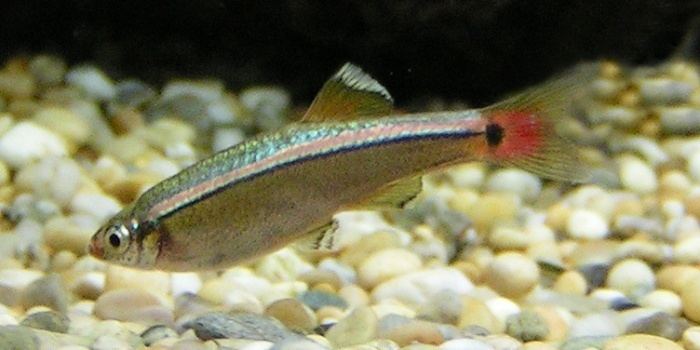 | ||
Representative species Fathead minnow, Emerald shiner, Mosquitofish, White Cloud Mountain, Common shiner | ||
White cloud mountain minnow tanichthys albonubes species spotlight
Minnow is a general term for freshwater and saltwater fish, especially those used as bait fish or for fishing bait. More specifically, it refers to small freshwater fish of the family Cyprinidae. They are also known in Ireland as pinkeens.
Contents
- White cloud mountain minnow tanichthys albonubes species spotlight
- Easiest beginner fish white cloud mountain minnow
- True minnows
- Other minnows
- Catching minnows for bait
- Mesh net
- Seine
- Wire trap
- References

Easiest beginner fish white cloud mountain minnow
True minnows
Smaller fish in the subfamily Leuciscinae are considered to be "true" minnows.

Bluntnose minnow (Pimephales notatus): The bluntnose minnow is a primary bait fish for Northern America (more specifically Ohio) and has a very high tolerance for variable water qualities, which helps its distribution throughout many regions. The snout of the bluntnose minnow overhangs the mouth, giving it the bluntnose. There is a dark lateral line which stretches from the opercle to the base of the tail, where a large black spot is located. The average size of the adult is approximately 5 cm (2 in). 'Pimephales
Common shiner (Notropis cornutus): These fish are one of the most common type of bait fish and are almost exclusively stream dwellers. The common shiner can be identified by the nine rays on its anal fin and terminal mouth. This minnow is typically bluish silver on the sides and greenish blue on the back., save for breeding season in which case the male gains a rose colored tail and anal fin. The shiner grows about 5–10 cm (2–4 in) within one year and reach a size of 13 cm (5 in) at adulthood. Another common "shiner" bait fish is the young version of the European chub (Leuciscus cephalus or Squalius cephaloides) which is quite easy to catch. Notropis potteri is known as the chub shiner.

Common emerald shiner (Notropis atherinoides atherinoides): Common shiners are most abundant in the Great Lakes of North America, primarily Lake Erie. The name of the emerald shiner comes from the greenish emerald band that expands from the back of the gill cover to the tail. This type of minnow has a short, rounded snout, the only difference between the common emerald shiner and the silver shiner is that the silver shiner has a longer snout and a larger eye. These fish grow to an average length of about 6 cm. This is one of the most common bait fish used in the Lake Erie region of Ohio and many fisherman hold it over all other bait.
Other minnows
Topminnow (Poeciliopsis occidentalis occidentalis): An endangered minnow species which are found primarily in southern New Mexico and Arizona. The drop in the topminnow population can be linked to the introduction of the common mosquitofish. This type of minnow grows to a length of 6 cm ( 2 1⁄2 in) with the females growing to be larger than the males. During times of breeding males turn black while females and non-breeding males are tan or olive-green. The diet of the topminnow consists of bottom debris, vegetation, and small crustaceans.
Common mosquitofish (Gambusia affinis): The mosquitofish is a very small minnow which has received its name for its fondness for mosquito larvae. The mosquitofish usually reaches a length of only 2.5–5 cm (1–2 in) long. This is a peculiar fish because the male has a "modified" anal fin and female gives birth to live young, much like their related cousins the guppy.
Other fish specifically called minnows include
Catching minnows for bait
Using minnows as baits can be seen by many fishermen as one of the most effective methods for fishing. Bait minnows can usually be found in any bait shop, especially ones near a body of water, but many anglers prefer to capture their own.
Mesh net
A method in which a fisherman finds a school of minnows and using a fine meshnet scoops through the school, bringing the net back out of the water in one motion. This method is primarily used on the shore near the bank of a stream or a shallow area of a lake or pond.
Seine
A seine is a large net, sometimes being 40 ft (12.192m), which has small weights attached to the bottom. These small weights help to keep the net vertical in the water while two people hold either end of the net and drag it through a spot where minnows are suspected to be. This method is good for catching a variety of bait fish and is one of the oldest methods for catching fish.
Wire trap
A wire trap is made of two half-cylinders with concave cones which end in small openings at either end. These two halves are connected together after some sort of bait to entice the minnows has been placed inside. The wire trap is connected to a length of line which is fastened to something on the bank or a float. Minnows are attracted inside the trap by the bait, swimming into the small opening at either end, after they have found their way in it is very difficult for them to escape. This technique is one that requires more time, but less attention.
